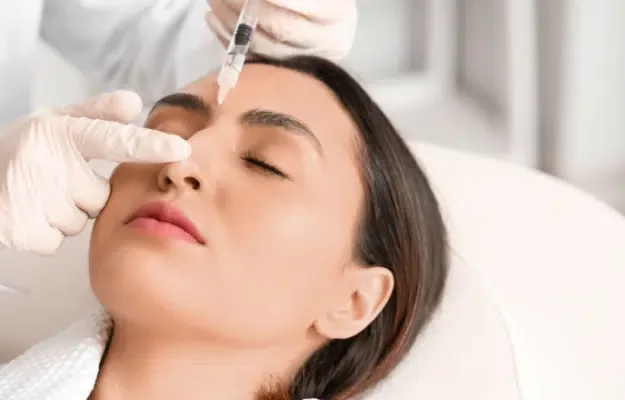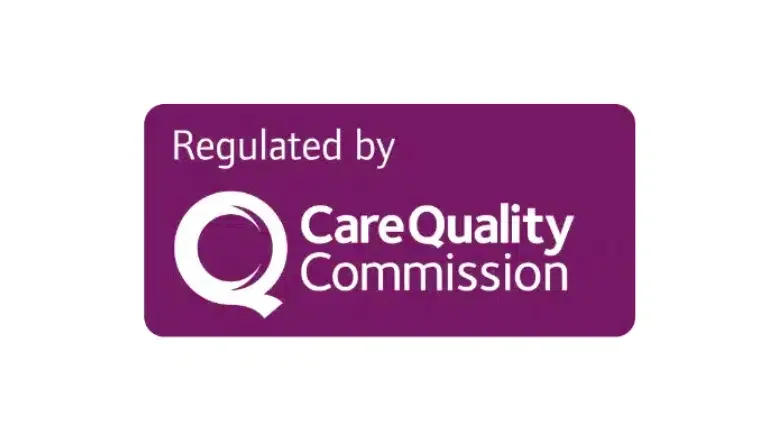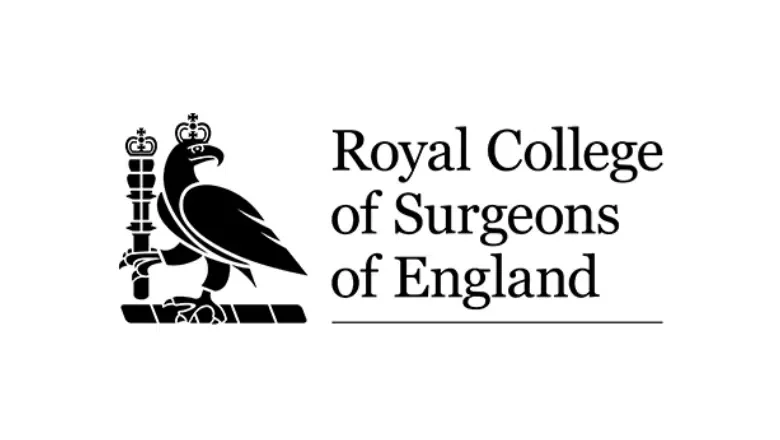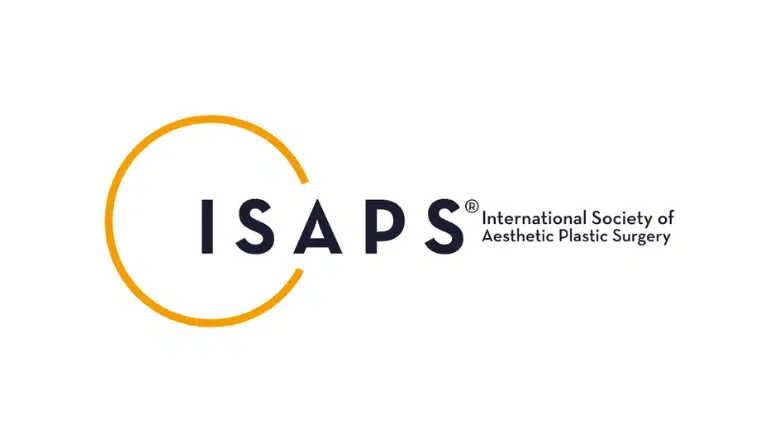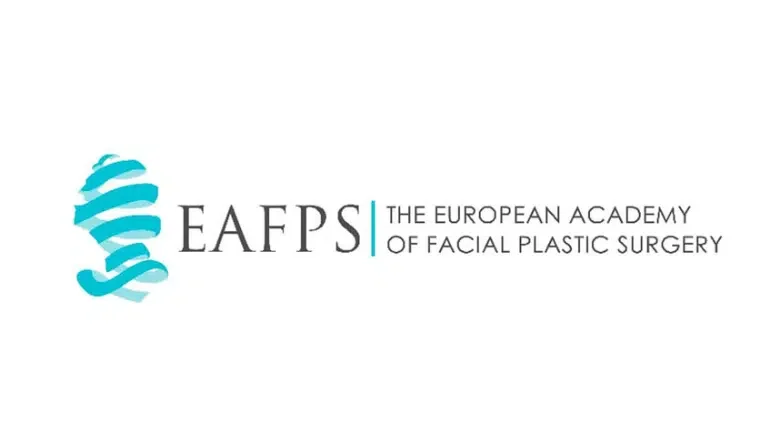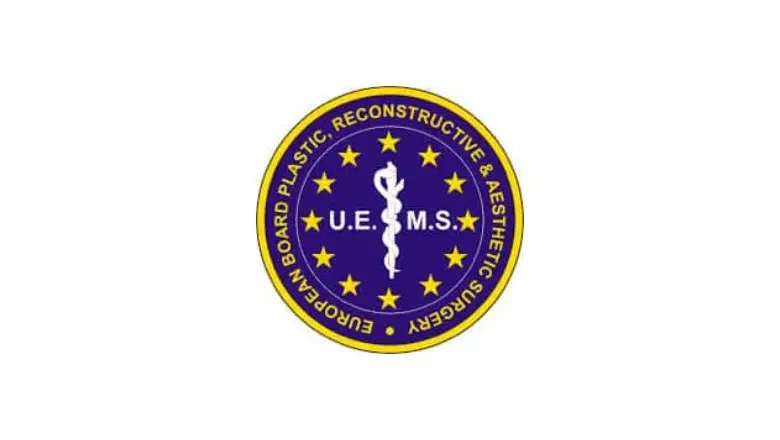Chemical peels in London
Chemical peels are an excellent option for skin resurfacing through targeted removal of the outer superficial layers of the skin through a controlled exfoliation process. The result is the proliferation of newer skin to renew the outer damage layer. Chemical peels can create a youthful appearance on the face and neck. Chemical peels differ in their strength and subsequent ability to penetrate the deeper layers of the skin. Many common skin concerns can be addressed, including fine lines and wrinkles, coarse skin texture, hyperpigmentation, chronic sun damage, and acne scarring. Chemical peels also increase the effectiveness of topical skin care products by removing the outer dead skin cells. This facilitates greater penetration of the skin care products. Chemical peels have been used for many years to create a fresher, more youthful and more rejuvenated facial appearance. Chemical peels can complement facial injectables, including Wrinkle relaxing injections and dermal fillers.
With the increasing popularity of laser skin resurfacing and Erbium laser over the past 20 years, the art of chemical peeling has diminished, however practitioners at Centre for Surgery in London have mastered the art of effective chemical peeling which is often a more affordable treatment compared with laser resurfacing. Ineffective chemical peels can lead to suboptimal results, as the surgeon must have a strong working knowledge of the type of solution, concentration, patient skin type, application technique, peri-procedural care, and repetition of treatment.
Expected results with chemical peels:
- Skin rejuvenation
- Treatment of acne scarring
- Removal of hyperpigmentation and improvement in skin tone and texture
- Treatment of pre-cancerous skin lesions, including actinic keratosis
RealSelf Top Doctors
RealSelf’s top doctor status is awarded to less than 10% of the RealSelf doctor community. This status is earned by achieving consistently high patient satisfaction (from RealSelf reviews), getting excellent feedback on expert answers to patient questions, and investing significant time in Q&A and other doctor activities. RealSelf’s top doctors are rated among the very best surgeons in the United Kingdom.
Structure and function of skin
The skin is the human body’s largest organ and covers its entire surface area. The total weight of skin averages just under 3kg in a 70kg male. Daily, the skin is exposed to harsh conditions, including sun damage. The skin possesses several adaptations that serve to protect it effectively against daily ‘skin stressors: excessive heat, light, injury, and radiation. The skin has two main layers: the outer epidermis and the inner dermis. There is also a third layer beneath the dermis, the subcutaneous fat layer.
The Epidermis
The outer epidermis is the most superficial layer of the skin and is made of a regular arrangement of skin cells roughly 5-6 layers deep, depending on the part of the body. The skin of the eyelid is exceptionally thin, as the skin of the sole can be a few millimetres thick.
The four constituent parts of the epidermis:
- Stratum corneum: This is the flattened skin cell layer continuously being shed. This layer completely renews itself approximately every four weeks.
- Stratum granulosum is the transition layer between the new skin cells and the old, flattened skin cells at the stratum corneum.
- Stratum spinosum: Newly formed skin cells are pushed up from the stratum basale into the stratum spinosum.
- Stratum basale (basal layer): This is the deepest layer of the epidermis where new skin cells are produced, which then start their migration upwards over time.
The Dermis
The inner dermis is situated beneath the epidermis and is the thickest component of the skin framework, with a rigid connective tissue matrix. There are two components of the dermis:
-
- Papillary dermis: This is the superficial portion of the dermis containing fine blood vessels called capillaries and free nerve endings. TCA chemical peels reach the papillary dermis.
- Reticular dermis: This is the deeper portion of the dermis containing nerves, blood vessels and accessory glands such as hair follicles and sweat glands
Ideal candidates for chemical peels
A full consultation with the patient is undertaken to establish realistic goals and expectations as well as to educate the patient on essential care instructions both before and after the procedure for optimum results. A careful history and physical examination allow the clinician to determine suitability for a chemical peel treatment.
Chemical peels have great versatility, and ideal candidates for chemical peels include:
- Looking for an effective treatment for facial rejuvenation, including fine lines and wrinkles and sun-induced skin damage
- Those with hyperpigmentation such as melasma, freckles, age spots and solar lentigo
- Treatment for acne scarring
- Seeking an improvement in skin scarring resulting from acne, traumatic injury or previous surgery
- Treatment of pre-malignant skin conditions, including actinic keratosis

Types of chemical peels
Chemical peels come in several different varieties that are able to penetrate different skin depths, from superficial to deep, depending on a patient’s goals for treatment. Your surgeon will determine the correct strength of chemical peel to use, and this will be based upon a thorough analysis of your skin type and any other skin concerns to select the correct type of chemical peel for you. For stronger chemical peels which penetrate to deeper levels, it is of vital importance to be seen by an experienced plastic surgeon or dermatologist, as the potential risks and complications are higher. The milder chemical peels, such as glycolic peels and lactic acid peels, can be safely performed by trained aesthetic practitioners.
Mild superficial peels
Superficial chemical peels are the least invasive type of chemical peel. Superficial peels are ideal for addressing mild photodamage, milder grades of acne scarring and anti-ageing effects. Superficial peels can remove the outermost layer of skin all the way to the deeper part of the epidermis based on the type of peel used. Superficial peels do not penetrate to the level of the dermis. The two most common types of peels are alpha hydroxy acid (AHA) peels, which include glycolic acid and lactic acid, and beta hydroxy (BHA) peels. In addition, milder fruit peels are available, which can be used to remove the most superficial layer of the epidermis, and this takes about 20 to 25 minutes. Our aesthetic nurse practitioner performs superficial peels.
Superficial chemical peels are most commonly used on the face and neck area at regular intervals of 3-4 weeks to provide quick treatment effects. Superficial peels can also be used as a springboard to commence a new skincare routine and prime the skin in preparation for a later deeper chemical peel. If you have a busy routine with a low tolerance for prolonged downtime, then a superficial peel could be ideal with excellent results, typically 5-7 days of downtime for most patients. Mild chemical peels are best for removing older and dead surface skin cells and assist in the body’s renewal of fresh skin cells without the typical side effects associated with stronger peels, such as redness, flaking, frosting and discomfort for a few days.
Medium strength peels
Trichloroacetic acid (TCA) is a versatile agent and is very effective in treating a wide variety of facial lines and wrinkles at varying concentrations. TCA is most commonly used at a 30% concentration to achieve a medium-depth peel into the upper part of the dermis. There are a number of factors other than the concentration of TCA that contribute to the depth of peel obtained, such as skin preparation, the use of pre-conditioning protocol, and the method of application. The depth of the peel can be determined clinically based on the colour of the frosting. TCA peels often lead to a pinkish or white frosting that heals in approximately five days. Deeper peels lead to a solid white frosting that takes longer to settle. The addition of Jessner’s solution before TCA peel application leads to partial removal of the epidermis, allowing for deeper penetration of the TCA. This combination is beneficial, as lower concentrations of TCA can be used for the same depth of peel, which helps to minimise complications such as scarring.
Prior treatment with a superficial chemical peel can also enhance treatment effects from medium-strength chemical peels. TCA peels are the most common type of medium-strength peel. They are ideal for patients who want more impressive results than can be achieved with a superficial peel but cannot tolerate the increased risks, potential complications and longer downtime associated with a deep chemical peel.TCA peels can be used up to four times a year, and the downtime is about 10-14 days on average for most patients. Medium-strength TCA peels are performed by one of our expert dermatologists or plastic surgeons.
3-step Centre for Surgery protocol for safe TCA peeling:
- Application of superficial peel such as a glycolic acid peel
- Pre-procedure priming for four weeks with prescription-strength skin care products
- Addition of Jessner’s solution immediately before application of TCA peel

Deep chemical peels
Deep chemical peels are the most powerful and aggressive type of chemical peel available for significant skin exfoliation. They can reach the deepest part of the reticular dermis, addressing even the most severe skin wrinkles and photodamage and having powerful effects against hyperpigmentation changes.
The most common deep chemical peel is the phenol chemical peel. Deep peels can also be composed of high-strength TCA at 60% and above concentrations. The traditional phenol peel previously used was based on the Baker-Gordon formula, but this was then replaced by phenol mixed in with croton oil and high-strength TCA peels.
Deep chemical peels exert their effects deeper down in the skin and can, therefore, remove severe wrinkles, severe photodamage, age spots, facial scars and premalignant skin conditions, including actinic keratosis. Surgical procedures like a facelift cannot change the quality of the skin, and this is where chemical peels can be helpful. Profound chemical peel results can last for many years, but the treatment can be used only once. As with medium-strength peels, patients would benefit from pre-treatment with a more superficial peel to enhance the treatment effects.
Centre for Surgery position on deep chemical peels
Deep chemical peels with phenol can achieve very impressive skin rejuvenation effects. We believe the risks and potential complications of deep chemical peels significantly outweigh their beneficial effects. There are now more controlled methods of ablating the skin with less risk and downtime. An example is our significant expertise in laser resurfacing using the Er:YAG laser. Our practitioners regularly use Er:YAG laser resurfacing fully ablatively to achieve results that match and even exceed results from deep chemical peels with far less risk and complications. Laser resurfacing is much more precise in being able to target a specific skin depth. Our latest generation Er:YAG laser by Fotona is also fully tunable to balance ablation and thermal effects on the tissue. Deep chemical peels are largely uncontrolled in the level of skin depths they penetrate even in the hands of highly skilled operators. Deep chemical peels are avoided in patients with heart conditions as they have been shown to increase the risk of heart failure.
What is frosting?
After applying a chemical peel, a chemical reaction with the skin occurs, which results in the appearance of a whitish frost-like substance on the skin. Frosting occurs due to the suppression of the melanocytes in the skin. Frosting results in a slightly higher risk of skin burn or the development of hyperpigmentation in the post-procedure period. With patients with darker skin types, the risk of hyperpigmentation is higher depending on the strength of the peel used. Higher-strength chemical peels should be avoided in darker skin types, as the risk of potential scarring and hyperpigmentation is higher.
After treatment, all patients should apply topical retinoid cream every day for four weeks to facilitate skin peeling and encourage new, fresher skin development. Topical retinoids will also help the peel to penetrate deeper, thus giving an improved clinical effect.
Chemical peels cost
There are a number of factors which will impact the final cost of your chemical peel procedure:
- Type of chemical peel – superficial or medium peel
- Combination treatments with facial injections
Why not call 0207 993 4849 and speak to one of our expert patient coordinators, who may be able to give you a rough costing prior to chemical peels?
Always remember that price should never be the determining factor when choosing your provider. We feel that safety and quality of service should be your number one priority and instil in you the confidence that our team will look after you before, during and after your procedure to the best of their ability.
Preparation for chemical peels
At Centre for Surgery, we believe the success of all cosmetic procedures can be improved with proper patient preparation. We go above and beyond to ensure that all our patients are medically, emotionally, and physically ready for a procedure.
Our specialists prefer to pre-treat all patients for 4–6 weeks before TCA chemical peeling. The pretreatment protocol improves skin tolerance, regulates fibroblast and melanocyte function, improves dermal circulation, and allows for the treated skin to heal 3–4 days faster due to increased cell division and new collagen formation. Modifications to this pre-procedure regimen (dosages and application intervals) are made as needed based on tolerance and skin types. A week before the chemical peel, patients are started on a cleansing and toning protocol and encouraged to maintain adequate hydration and regular moisturising of the skin. Antiviral prophylaxis is started two days before the chemical peel and continued for five days after the peel in patients with a prior history of herpes virus.
Recovery after chemical peels
Once the peel is complete, a thin layer of ointment is applied to the treated areas. The patients are instructed not to moisturise the area, as this will impair desired skin sloughing. Typically, 7–10 days are needed for the skin to slough and renew. Dermal regeneration takes up to 6 weeks. The patient may wash their faces daily without scrubbing for the first three days. Patients are instructed to pat dry the area with a soft towel. Cold compresses can be used to minimise discomfort, and paracetamol or ibuprofen may be used as needed. All patients are given 24 hours of prophylactic antibiotics. Once the skin regenerates after 7-10 days, the pre-procedure regimen discussed above restarts.
Risks and potential complications of chemical peels
Chemical peels are a safe procedure when performed by appropriately trained practitioners. At Centre for Surgery, risks are minimised by meticulous patient selection and thorough pre-procedure preparation. It is very important to undertake skin preconditioning to enhance treatment efficacy.
Who is not suitable for a chemical peel?
- Pregnancy
- Breastfeeding
- Active skin infection
- Open wounds
- Inflammatory skin conditions
- Drugs with photosensitivity side effects
Potential risks of superficial chemical peels
- Excessive burning
- Persistent redness
- Post-inflammatory hyperpigmentation
- Persistent itchiness
Risks of medium-strength chemical peels
- Post-inflammatory hyperpigmentation
- Infection
- Facial scarring
- Persistent redness
- Herpes virus reactivation
- Post-procedure milia
- Acne breakouts
The Centre for Surgery approach to aftercare
Our aftercare programme was recently described as ‘outstanding’ by our regulator, the Care Quality Commission.
Our postoperative support team phones all our patients the day after their chemical peel procedure and then every other day thereafter for the first two weeks. The proactive nature of our postoperative support gives every patient the best opportunity for a smooth post-procedure recovery free of complications. In many cases, if complications were to occur, their impact would be markedly lessened by early detection, prompt clinical assessment, and correct treatment. When a patient expresses concern to our team over the phone, then we often call patients on the same day for assessment with one of our expert nursing team. Even if there is no significant issue, the careful explanation and calm reassurance provided by our team can help to alleviate any worries you may have experienced.
FAQs
-
What does chemical peel treatment involve?The skin is first thoroughly cleansed to remove impurities and grease followed by the careful application of the chemical peel solution. The solution is left on the skin for a few minutes before being neutralised to stop the effects from of the chemical peel from acting for any longer than necessary.
-
Should I prepare my skin in advance of a chemical peel?In cases of TCA peels, your practitioner prescribe skin lightening cream and retinoids for 4-6 weeks to strengthen the skin prior to chemical peel treatment. You should also avoid being in direct sunlight and wear SPF30 or higher sunscreen to avoid developing a tan. Tanned skin may place you at higher risk of complications following a chemical peel.
-
What are the types of chemical peels that you offer?At Centre for Surgery, our practitioners provide 2 main varieties of chemical peels - superficial peels and medium depth peels. Superficial peels are lighter more gentle peels that work by removing the outer layer of skin cells and are ideal for the treatment of fine lines, mild sun damage, dry skin, areas of hyperpigmentation such as sun spots and milder forms of acne scarring. Medium strength chemical peels are stronger because they contain TCA or trichloroacetic acid. Medium peels are also known as TCA peels. TCA peels have a deeper depth of penetration and can be used to treat deeper wrinkles, more severe forms of sun damage and uneven skin tone and texture. TCA CROSS is used for treating ice pick acne scars. We do not offer deep chemical peels such as phenol peels as the risks and potential side effects outweigh the benefits of treatment. Phenol peels can only be performed under deeper levels of sedation or anaesthesia as they can be a very painful treatment.
-
How many chemical peel treatments will I need?For treatment of mild acne scars and for treatment of mild to moderate photoageing then usually 4 to 6 treatments are suitable. Deeper acne scars and more established lines and wrinkles will often require the application of a 35% TCA peel up to 2 treatments being necessary for proper treatment.
-
How much do chemical peels cost?Chemical peel treatment starts from £55 and the exact cost will depend on the following:
The type of peel - superficial or medium
Number of recommended treatments
We would always recommend to book a face to face consultation with an aesthetic practitioner to allow the creation of a personalised treatment plan for optimum results. Chemical peel treatment is available at our Baker Street clinic in Marylebone, London.





